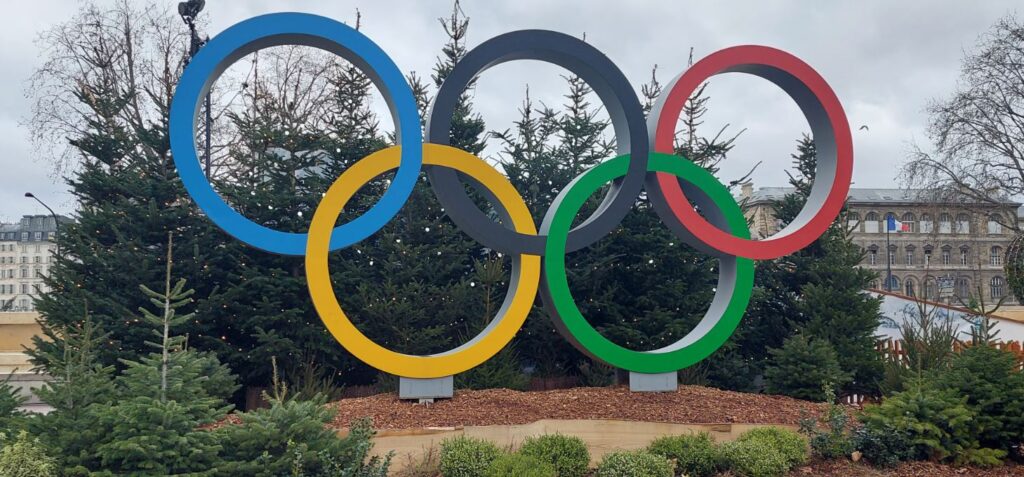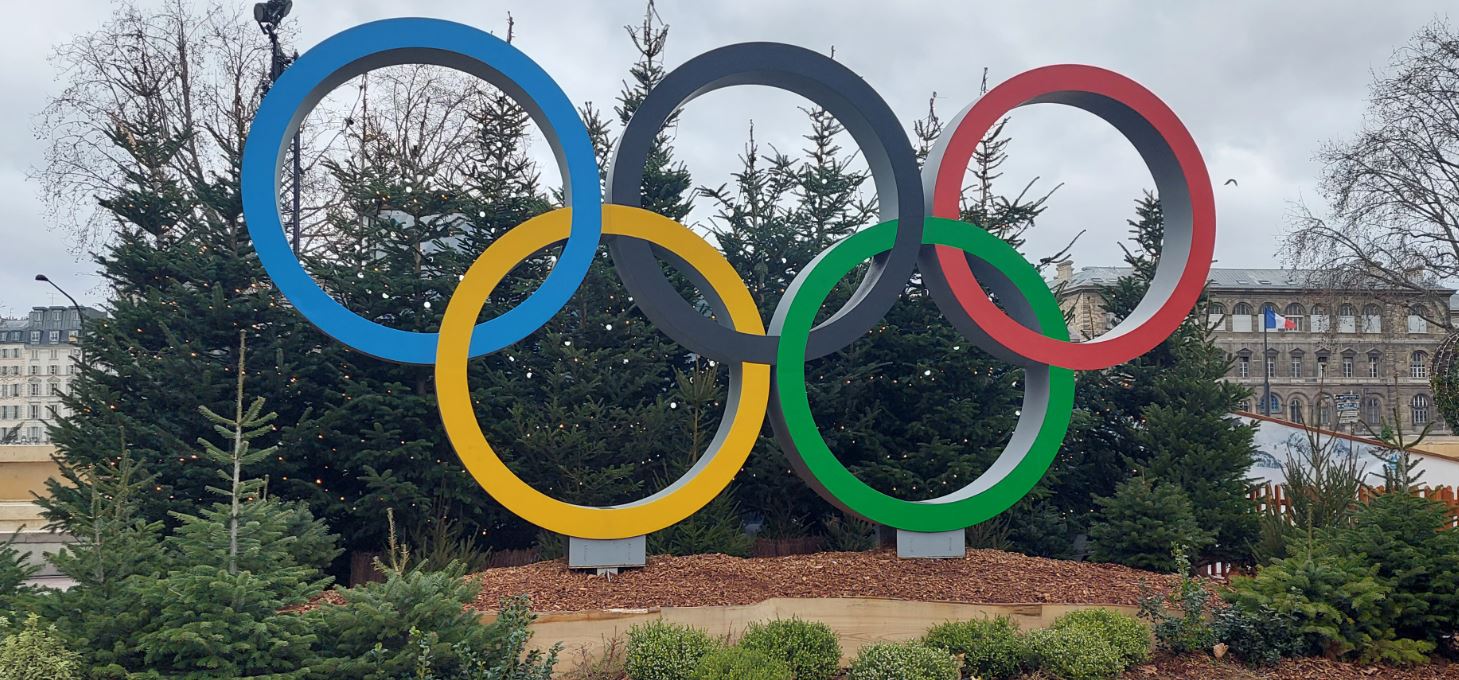What is the mascot of the 2024 Paris Olympics: The Phryges, styled on historic Phrygian hats. Anticipation is simmering in France ahead of the 2024 Paris Olympics. Helping build the excitement are little red cartoon characters popping up in unlikely places to promote the event. The cute little creations are the official Paris Olympics mascots. Keep reading to learn more!

Paris 2024 Olympics mascot
It takes a second for the eyes to focus on the chirpy-looking Paris Olympics mascot and identify them as red Phrygian caps.
If you’re into history, you might know Phrygian caps from depictions of French revolutionaries.
You can also see the cap on Marianne, the embodiment of France adorning government buildings across France.
Les Mascottes sport French colors on the distinctive red Phrygian cap. A winning smile and eyes resembling tricolor cockades complete the bright and friendly ensemble.
Latest in a long line of Olympic mascots, the chirpy cheerleaders carry the torch for younger sports fans. Their mission is to promote the idea that sports can be life-changing and fun.
Les Phryges meaning: What do they represent?
The soft, conical Phrygian cap, with its signature fold at the peak, has existed for millennia. The headwear was first identified in ancient civilizations from Persia to Greece.
Foreign captives and kings flaunted them in ancient Greece. King Midas is seen wearing them in early depictions. Early Hellenistic military also wore similar bronze military helmets.
The appreciation for a winning style carried into ancient Rome. Most famously, freed slaves donned the increasingly symbolic hats. Henceforth, they were also known as Phrygian or Liberty Caps.
The distinctive headwear appeared later in France. Contemporary accounts indicate a similar style was worn by workers who built Note-Dame cathedral in the 12-14th centuries.
When worn by revolutionaries in Troyes in 1790, one year after the Bastille was stormed, the Phrygian cap became something more. Revolutionaries in Troyes were likely inspired by the bonnets rouges first worn by rebellious citizens in Brittany more than a century earlier.
Around the same time, other symbols of the new order emerged. One was Marianne, the embodiment of the new republic proudly wearing the red Liberty Cap.
Fast forward through two centuries of national myth-building, the Phrygian cap and Marianne are now motifs of the Revolution and subsequent republics. Up there with the Tricolore flag and La Marseillaise as national symbols.
What do Les Phryges look like?
Wherever the Paris Olympics 2024 logo appears, there’s a chance Les Phyrges are lurking nearby. They’re easy to spot.
Picture a bright red cap with big eyes, a friendly smile, fingerless arms, and protruding legs wearing sports shoes and tricolor laces. The Paralympic Phryge wears a running blade.
You can see them in various guises in this piece from the Today show.
The cheeky mascots chosen for the Paris Olympics 2024 are a far cry from their revolutionary roots, prompting the occasional grumble about the symbolism being diluted. But on the whole, France seems to like the perky red hats with eyes and legs.
If you’re wondering, Les Phyrges don’t have individual names. But we know they have a black belt in pancake flipping and an interest in fashion. Although we might be reading too much into a marketing campaign aimed at children.
One thing is for sure, we can expect the endearingly small Phrygian caps to start appearing everywhere as France gears for the Paris Olympics 2024. Probably wearing sports gear and urging the nation towards sporting glory. You can get a flavor of what to expect in this promo video.
Why were the Phryges chosen for the France Olympics 2024?
The winning design for the Paris Olympics 2024 mascot was overseen by Joachim Roncin and completed by a Parisian creative agency enigmatically named W.
The objective was to showcase a French icon.
It’s no surprise the Liberty Cap made the shortlist for the Summer Olympics 2024 mascot. With a few whimsical anthropomorphic features, the two triangular red mascots transform into adorable figures.
All other ideas were swept off the drawing table, dashing any hopes of seeing pole-vaulting baguettes and escargots in sweatbands.
What do the French think of Les Phryges?
Naturally, no attempt to redefine national symbols can pass without causing a stir. Some talking heads noted the progressive nature of the design, an image of fraternity and equality replacing old Olympic ideals that extolled the virtues of going “faster, higher, stronger.”
More memorably, eyebrows were collectively raised when observers noted an anatomical resemblance to a female sex organ.
The notion drew much laughter. And in French fashion, a genuine debate. For some, the imagery was a feminine statement. Delighting those who felt the revolutionary symbolism had been forgotten.
While Twitter made hay with the meme, the rest of France moved on, and the mascots appear to have won people over.
Praise has been heaped on the cute and original design. Above all, the Summer Olympics 2024 mascot is a hat everybody in France recognizes and respects. A successful redesign of a national emblem.
Ouvrons Grand les Jeux – Games Wide Open
France will host the Rugby World Cup in 2023. The following year, the covers will come off Notre-Dame Cathedral, restoring a treasured building to its rightful place as France’s most enduring icon.
The crowning glory in a series of national moments will be the Paris Olympics 2024. Les Phyrges represent the slogan for a ‘Games Wide Open,’ flying their Tricolores as the newest and most colorful symbols of France’s past and present.


